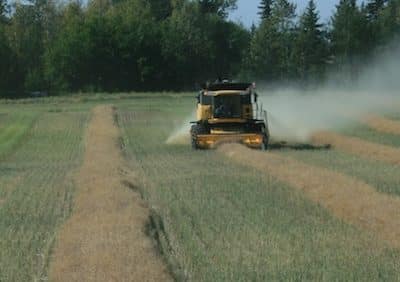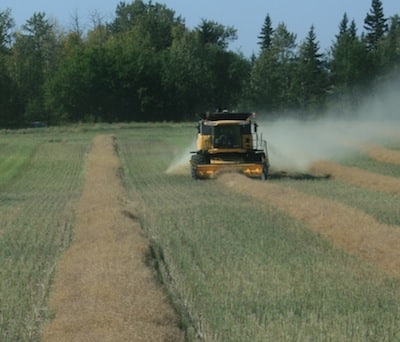Harvest losses can add up quickly, especially if combines are pushed beyond their most efficient operating capacity. Slowing down even just 0.5-1 mph can go a long way to reducing losses, and the bushels saved can more than make up for the extra time.
Once you’ve put canola into bins and bags, the work isn’t completely done. All canola in bins should be aerated, if possible, to cool it down to a safe and even storage temperature. Canola in bags can’t be aerated, but it should still be monitored. Bags can provide safe storage for up to a year if the grain is dry and cool. If canola has higher moisture, monitor bags closely and considering moving canola within a few months.
Disease assessment is best done before or during swathing. After the crop is swathed, root and stem material will start to decompose, making it harder to accurately identify diseases presence and severity. If the crop is already swathed, checking it now is better than waiting another week.
Our Tweet of the Week comes from @AlbertaCanola. Thanks for the Canola Digest plug. The cover article looks at everything we know, so far, about straight combining canola. Send us a tweet to @CanolaWatch with the hashtag #straightcutcanola if you have more straight combining tips to share.



